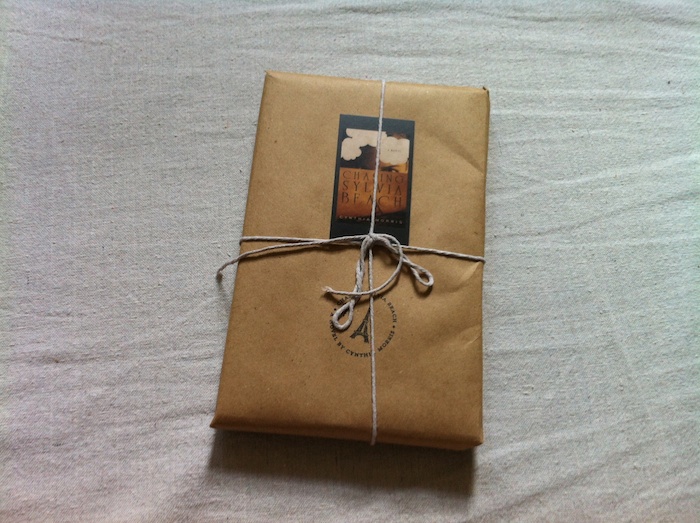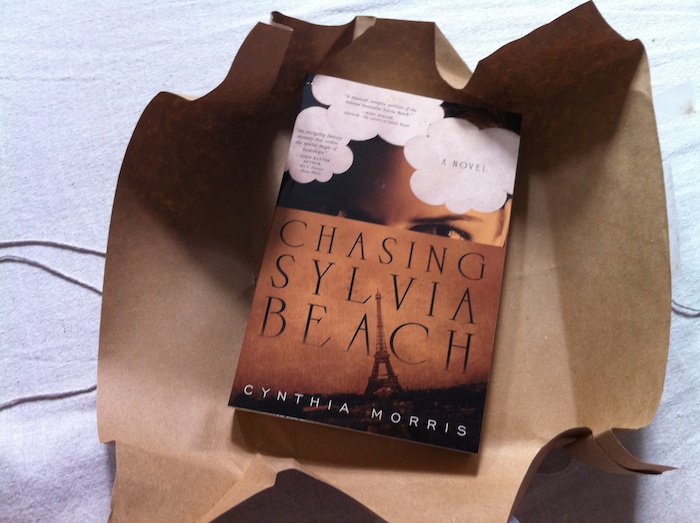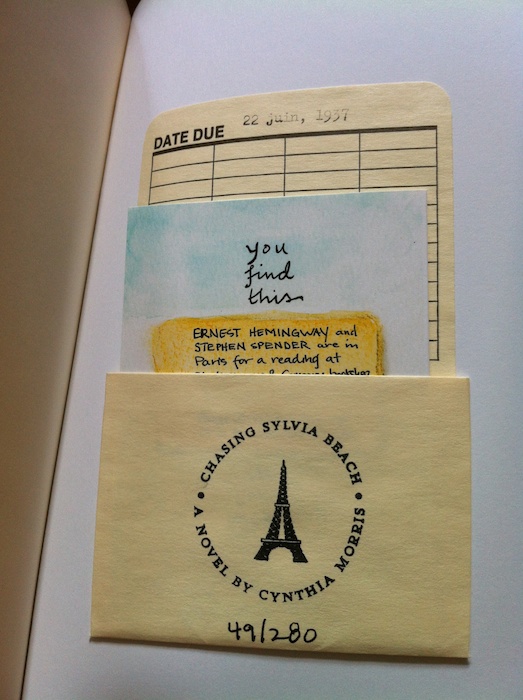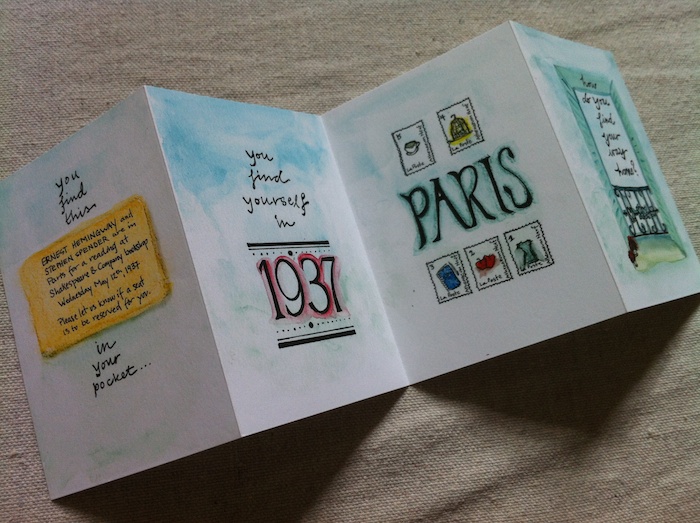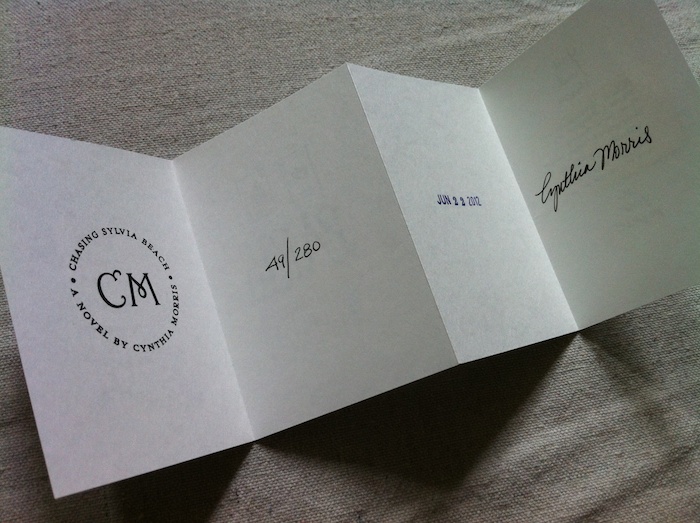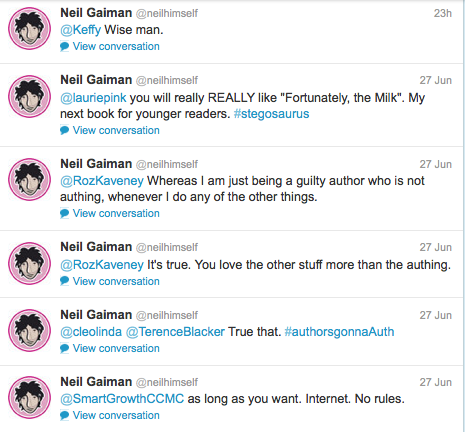Are you a writer who wants to ensure your book finds an audience? Today I am going to review specific lessons that Rebecca Skloot has shared as to how she took her book from an idea that no one wanted to the #1 spot on the New York Times Bestseller List with her book The Immortal Life of Henrietta Lacks.
Everything I share below is from an incredible interview with Rebecca by Jason Boog as part of the Mediabistro Literary Festival & Workshops. This program, and so many others by Mediabistro are highly recommended. Full disclosure: I teach an online course for Mediabistro: Digital Content Strategy.
While Rebecca is a nonfiction author, I feel that much of what she shares is applicable to fiction and other types of writers. Okay, let’s dig into the tips she shared:
START MARKETING NOW
“The biggest mistake writers make in terms of marketing and publicity for their book is starting too late.” For Rebecca, writing and marketing were intertwined, and she laid the groundwork for marketing 8 years prior to publication. That’s right, she spent EIGHT YEARS considering the marketing channels she needed and the relationships that would be essential to spread the word about her book. She orchestrated her entire professional career as a freelance writer around the idea of building the network and awareness she needed to help ensure the book was successful. By the time the book came out, there were many well-placed people waiting for it and ready to help spread the word.
“Writing is an art and publishing is a business,” she says, and underscores that you need to do both if you want to be read. That yes, writers need to be marketers.
Rebecca didn’t wait for others to give her permission. She printed off her own galleys of the book before publication, and sent them out 100 of them to any “big mouth” she could find who may be interested – people from blogs, Twitter, science insiders and journalists. She credits this with a lot of the conversation and buzz that started a year before the book was released. This happened against her publisher’s wishes – they cautioned her about creating buzz too early. But she found that the sooner she got people interested, the more invested they felt in the process and the more likely they were to talk about the book once it was released.
UNDERSTAND YOUR GOALS, WHAT YOU NEED TO HAPPEN
Rebecca knew she wanted an excerpt in Oprah’s magazine. So, even though the book wouldn’t be published until 2011, she began pitching the staff at O back in 2004. Why? Because she wanted them to want the book when it eventually came out, so she focused on:
- Establishing the relationships she needed at the magazine.
- Understanding their process and what they look for in feature content.
In other words: she did her research, and she spent years laying the groundwork, instead of just waiting for “publicity” to happen three months before the book launch. She was invested in the media outlets that she wanted coverage in.
Rebecca offered her services to O Magazine as a freelancer – she would do ANYTHING for them – never turning down an assignment. She focused on their needs first, build relationships with her editor there, who gradually became curious about the book Rebecca was working on. Again and again, she talked about how when you build a relationship by helping, that eventually that person asks: “so, tell me what else you are working on.” By the time her book was ready for publication, Rebecca says it was a “given” that O Magazine would publish an excerpt of it. What’s more: she packaged the excerpt for them in a way that made it SUPER easy for them to publish it, she knew exactly what they would need, and removed barriers. This is what the experience of helping them for 6+ years provided her.
It didn’t stop there. She knew Popular Science, Scientific America, and Wired magazines would be important as well, so she worked hard to get freelance jobs with them, always focusing on helping and building trusting relationships. In other words: she built her freelance career on where she wanted the book to be years later. This allowed her to tailor her book content better for each. For example: for Popular Science, she wrote the article as a list, which they like; for Wired she created an infographic, which they like.
GET INVOLVED – IT’S ALL ABOUT RELATIONSHIPS
Again and again, Rebecca considered who her audience was, where they would be, and who has access to them. In addition to her freelance writing, she volunteered at conferences, joined boards and ensured she was anywhere book reviewers or those in the media would be.
For events, she would volunteer to organize panels at journalism or science events, and then target & invite specific editors at publications she wanted relationships with. She did the same with agents who may be interested in her book. Most of these people would feel honored to be asked to be on the panel, and would gladly have lunch with her prior. The key here is this: she got to know them as COLLEAGUES, not as an author pitching their book. As she says: she was able to engage them in conversation around the story in her book in a natural setting, in a way where they would be open to learning about it.
She reached out to editors saying “I am a book reviewer, don’t you want to meet me?” and “I am a conference panel organizer, don’t you want to meet me?” and of course they did. But this was part of a strategy: “I knew eventually I would be talking to them about my book.”
Obviously, she walked a line that many writers fear: becoming a marketer. As she says, “It feels weird and smarmy to think of this stuff,” but she knew that unless she was aggressive in forging these relationships, her book would not find the audience she knew it could.
And she knew this would be an uphill battle. When she sent out her original proposal back in 2001, she received many rejections, each of which seemed to say some variation of these two responses:
- “I see this as an extended magazine article, and not a book.”
- “I can’t imagine how a book on this topic will reach more than a very limited audience.”
Her goal: prove them wrong. For her marketing efforts, she focused on three things, in this order:
- Magazines and media
- Book reviews
- A book tour
For that last step, she had many hurdles to overcome. She leveraged her network to identify potential speaking opportunities and begged people to cover her travel expenses. She would schedule one university, then hunt for any bookstore she could speak at within driving distance of it.
She had to overcome her fear of public speaking, and learn how to hone her talk. She trained for this. In the end, she never did read from the book at these sessions, but instead engaged her audience in story and conversation.
Rebecca is eager to clarify that while she was strategic in this process, that she was careful to not always be talking about herself. Instead, she talked about the story her book shared, a story that she calls an obsession for most of her adult life. She describes it:
“I wasn’t just saying ‘I have this thing I want from you, and that is it.’ I was an actually really active book reviewer and panel organizer, and really did believe it was important to get all kinds of science writing out there, so I was helping other writers. I was always volunteering. There was a reciprocal community, not just ‘oh, here is that woman who is always talking about her book. That’s the key, it was never all about the book, it was a bout the community of it, making people feel apart of something. It wasn’t just talking about my book, it was me asking ‘tell me what you are doing.’”
SOCIAL MEDIA IS NOT ABOUT MARKETING
During this process, she learned of the value of social media, and especially Twitter. She says she was always showing people how to use Twitter – pushing them online and into conversation.
“People misunderstand Twitter, they think it is about press releases and marketing. But it is about relationships and conversations.”
A key mistake she sees people make again and again on Twitter is to only post status updates about themselves. Instead, she recommends sharing stuff you are interested in, and anyone who would like your book would also be interested in.
“Just be yourself, a human being, not your ‘public persona.'”
YES, THIS IS A TON OF WORK
When listening to Jason and Rebecca talk, it was clear: this is a ton of work. In all of these years, even after she got a book deal, she went through 2 agents, 3 publishing houses and 5 editors. She had a 2 year battle to get her book back from the 1st publisher because they wanted to remove what she felt was the heart of the story – the family. They wanted to keep it just about the science. They really pushed her, and tried to make her feel she was just lucky to have a book contract. She fought back, and eventually – years later – won.
When she went out again the second time to find a publisher, she had “built this very large group of editors who were very curious to read the proposal.” By this time, she had learned a lot about marketing, and converted the single paragraph in the proposal that spoke to marketing to a full-fledged “marketing plan,” which was about a page and a half in length. She provided specific publicity ideas and made it very clear that she would be acting as a publicist in this process. She also included a long list of famous writers who said they would look at the book for potential blurbs. Her bio was also different because she had spent years writing for national publications.
Whereas the first proposal was a flop, the second one was very well received. It was ironic too, many editors responded that since seeing her first proposal years ago, that Rebecca had clearly become a better writer, had better developed the characters, and story, etc. But the truth was: the proposal was EXACTLY the same as it was back in 2001, except for the marketing plan and her bio.
There was so much interest, and there was a bidding war for the book via auction. She actually interviewed each publisher to ensure she wanted to work with THEM!
How did she sustain herself through this process? I’ll just call it gumption. She was balancing:
- Freelancing to pay the bills
- Teaching on the side
- Writing and researching the book
- Trying to sell and market the book
This, all over the period of 8 or more years.
“It is devastatlingly exhausting, and you are often struggling because you haven’t yet received royalty payments.”
Is this the path for every writer? Of course not, though Rebecca does feel that marketing will be expected more and more of authors.
You can find Rebecca in the following places:
And you can find those who made this interview possible in the following places:
Thanks so much to Mediabistro, Rebecca, and Jason for such an incredible resource!
-Dan

 What can a 17 year old teach us about building an author platform? A LOT! Today I want to profile Nikhil Goyal, a 17 year old high school student who will be releasing his book on education reform this September:
What can a 17 year old teach us about building an author platform? A LOT! Today I want to profile Nikhil Goyal, a 17 year old high school student who will be releasing his book on education reform this September: 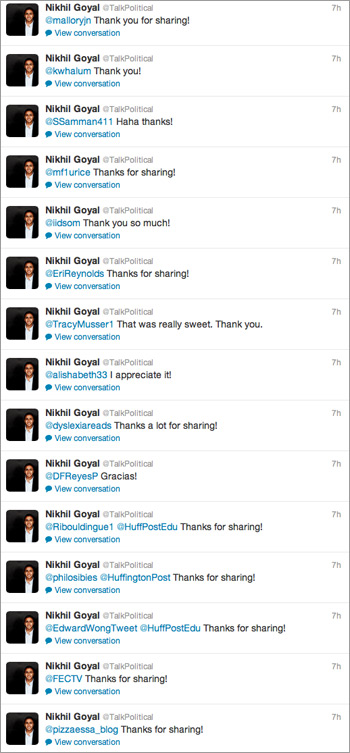 Oh, also this… to the right is a screenshot of his Twitter feed from last night, where he takes the time to thank individual people who shared an article that featured him.
Oh, also this… to the right is a screenshot of his Twitter feed from last night, where he takes the time to thank individual people who shared an article that featured him.